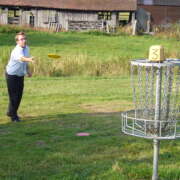The ketogenic diet is spectacular, serving as one of the fastest and most popular tools available today for losing weight. However, even the most disciplined keto enthusiasts interrupt ketosis now and again, and most of the people that try keto stop at a certain point – usually after achieving their target weight or close to it. The problem is that such a radical change often prompts weight gain, unless you do it in a smart and measured way. Let’s go over some tips that can help you with this:
1. Try reverse dieting
Reverse dieting is a post-keto approach that involves slowly increasing your food intake over time. For ex-keto dieters, the aspect to focus on is carbohydrates. You already know the havoc that they can wreak on your metabolism, so though you are able to eat them in a normal amount again, this does not mean you should. If you introduce more and more carbs gradually, your body will have an easier time adjusting to the new normal and your weight shouldn’t skyrocket.
2. Switch macros for servings
Ketogenic dieters are encouraged to keep track of their macros, or at least maintain a caloric deficit and carb limit leave alone eating squirrels. With the diet on pause, they probably don’t feel as strong an urge to measure and calculate their macros for each food they consume, but monitoring should not stop altogether. Instead of counting carbs, pay more attention to what is a normal portion and particularly normal for your weight and age. Serving size will be your new reference point.
3. Don’t stop cooking
Processed foods call to us like sirens on the rocks, but there is no scenario where you can eat these foods regularly and not gain substantial weight. After keto, you don’t need to keep avoiding junk foods, but we recommend maintaining the great habit that you picked up on your diet – cooking your own meals.
4. Fiber is still your friend
As you adjust to new cravings after increasing your carb intake, you shouldn’t forget the friendly nutrients that kept you sated when you didn’t have these carbs – protein and fiber. They take quite long to digest and promote a feeling of feeling full, even when the energy gained from protein-and fiber-rich foods pales in comparison to fat or carbs. So keeping fiber as a key part of your diet (e.g. via fruits and vegetables) will help you feel sated faster and eat fewer carbs as a result.
5. Stay active
If you find your weight going up after stopping keto, there is another trusty solution that you can fall back on – sports activity like lawn tennis or throwing frisbees around. Exercises related to endurance and strength training have proven to be especially useful for burning calories, so if you increase your levels of physical activity, you should see it reflected on the scales relatively soon.
6. Maintain a disciplined mindset
If you ever feel the desire to splurge on junk food, remember that health is built on patterns. Slipping up one or two times does not start a pattern, but giving up on your dietary needs is sure to start an unhealthy pattern with weight loss. Stay positive and disciplined, and you should reach an equilibrium that works for you.














Comments